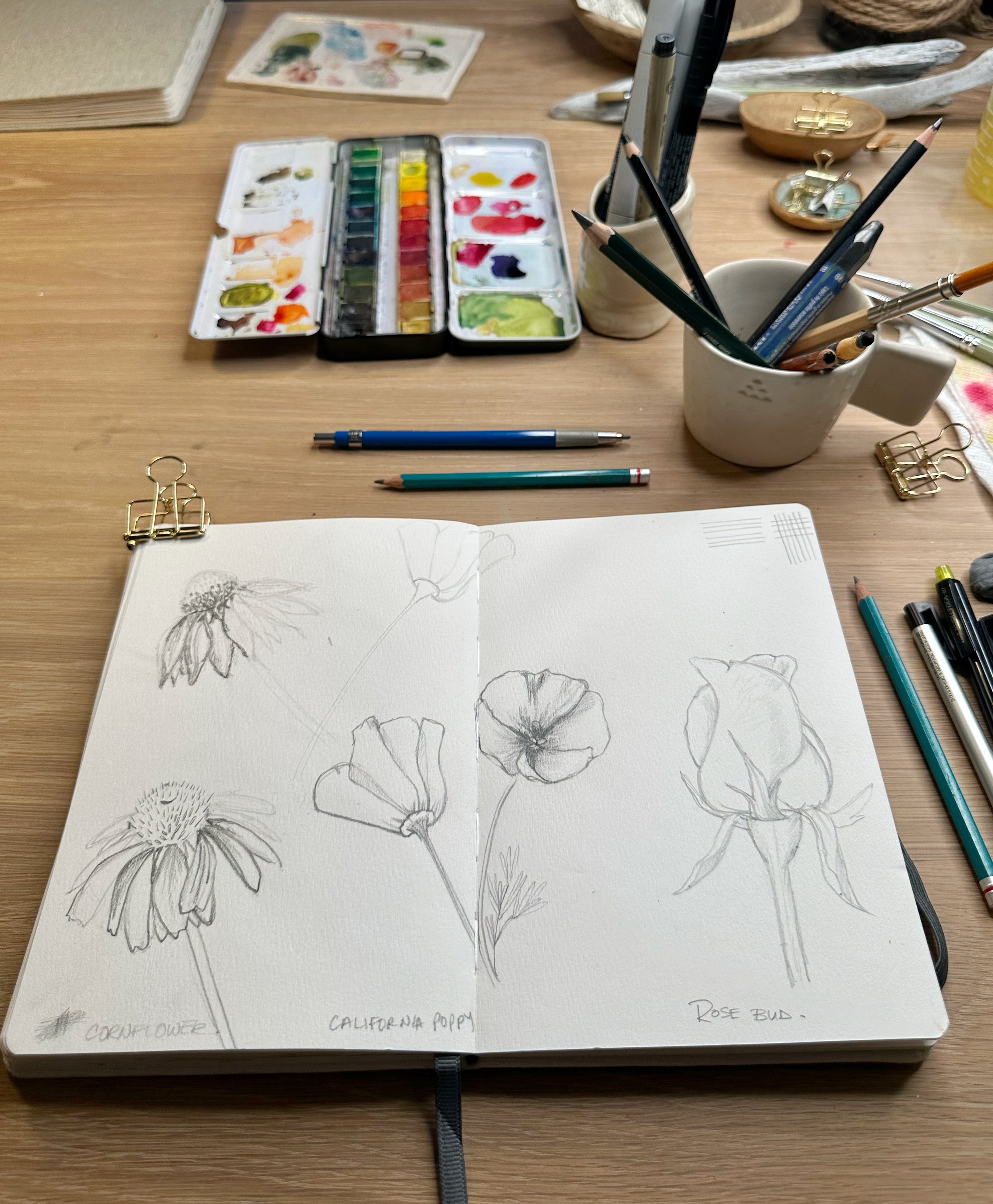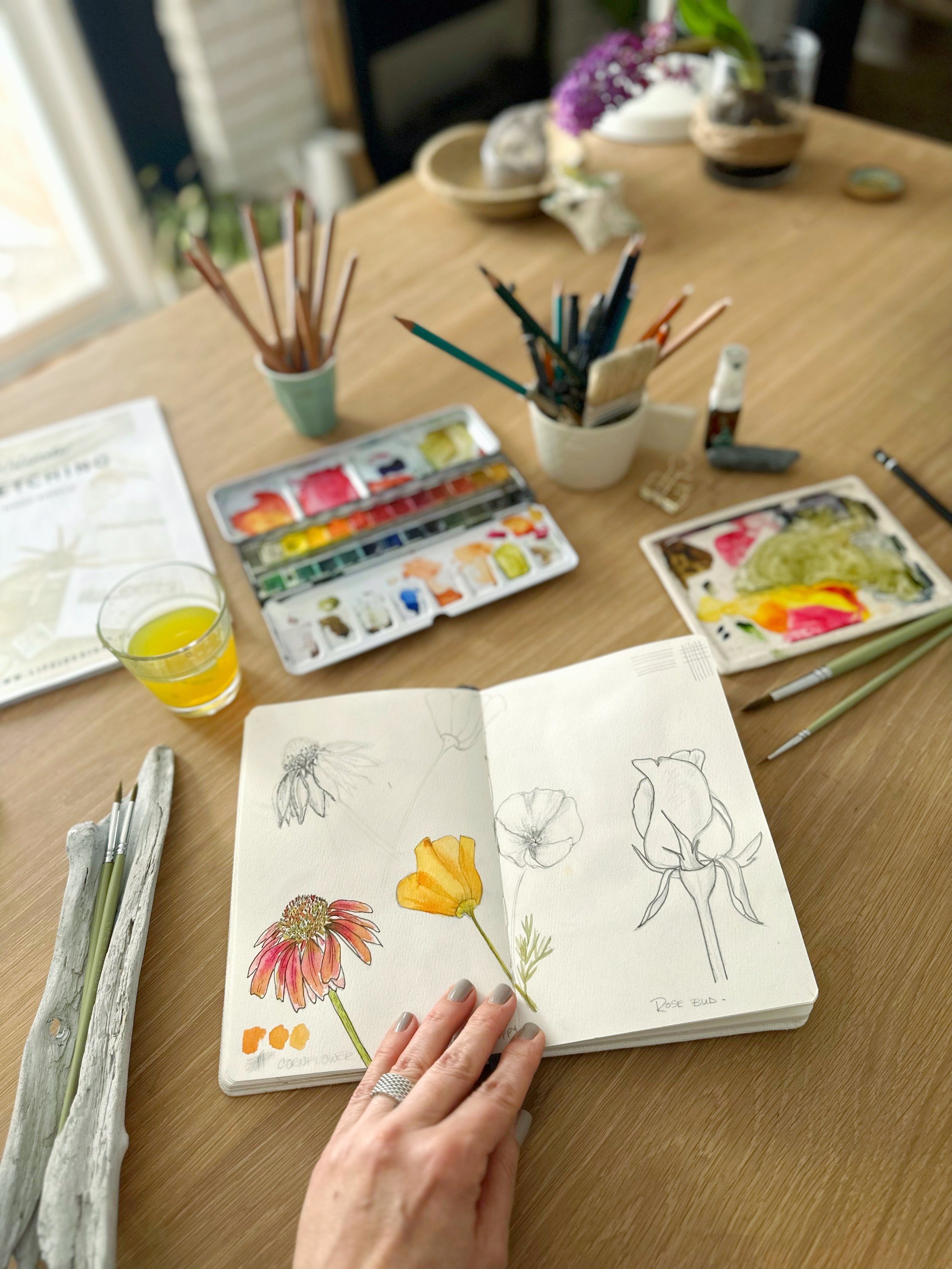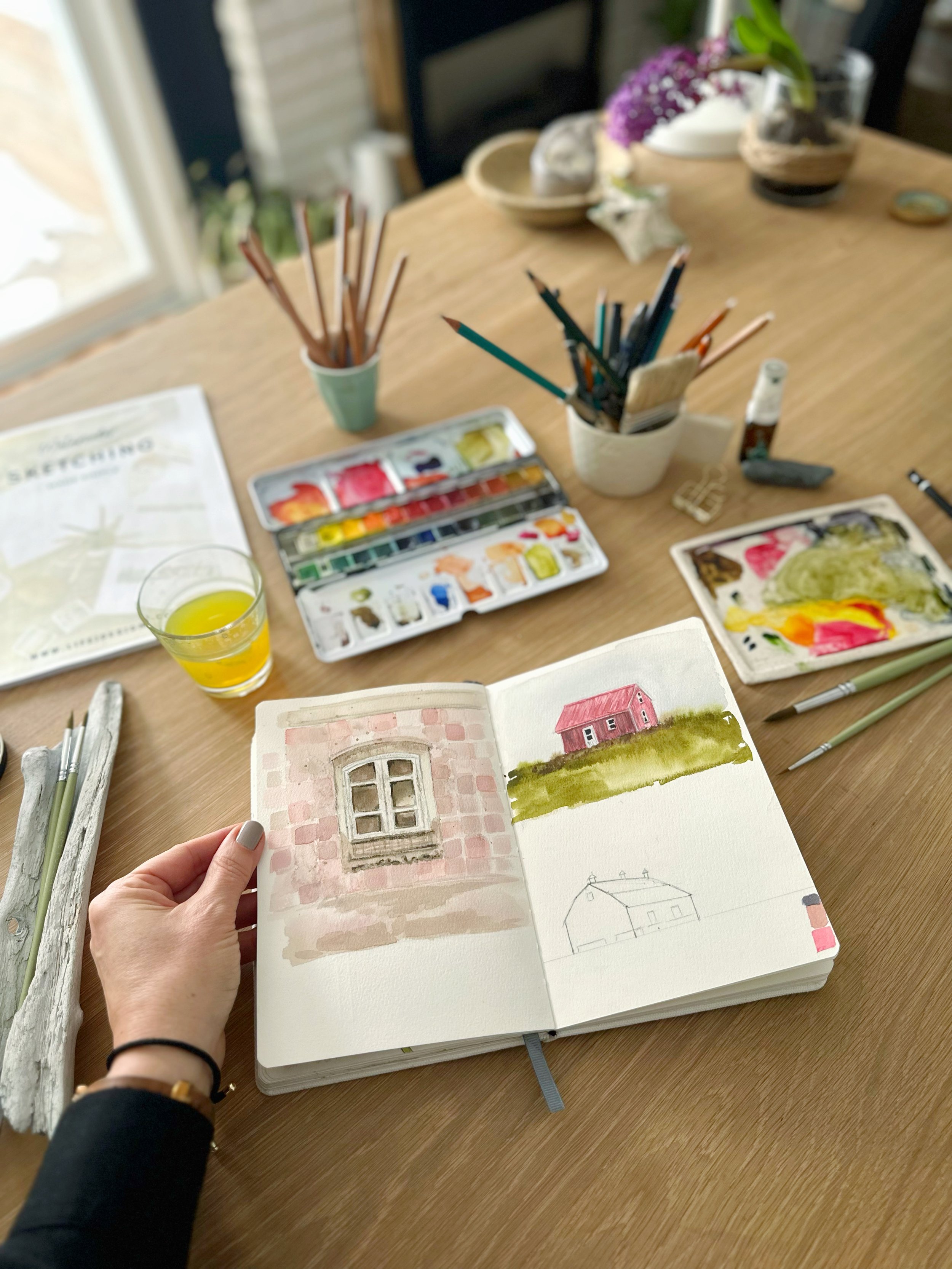Sketching for Watercolor Painting for Beginners
Sketching for watercolor painting has the ability to breathe life into your creations! Today I wanted to focus on exploring sketching for watercolor and discovering how it sets the foundation of your painting. Sketching is an important step that allows you to plan, compose, and refine your ideas before applying vibrant washes of watercolor. With a sketch as your guide, your watercolor paintings will flourish with intention and artistic vision.
Still getting comfortable with watercolor painting? I suggest using these books to help you get started!
In this blog post, we will focus on the art of sketching for watercolor painting for beginners, unlocking the techniques to create compelling compositions and breathe life into your artwork. Keep reading to learn some of my favorite tips that I teach my sketching for watercolor painting students.
Observing Your Subject
Developing strong observational skills is one of the best skills you can learn to help you create accurate and expressive sketches. Take time to study the subject you’re painting, whether it’s a landscape, a still life, or a portrait. Pay attention to every detail, shape, and proportion that you see. Train your eye to capture the essence of what you see, which will form the foundation of your painting.
If you’re still learning how to sketch for watercolor, I recently published this Sketch & Paint book that I think you’ll find helpful! It’s also available as an e-book you can find here.
Composition and Planning
Sketching allows you to experiment with different compositions and plan the arrangement of elements within your painting. Consider the rule of thirds, leading lines, and negative space to create visually engaging compositions. Use light pencil strokes to outline major shapes, ensuring a balanced and harmonious arrangement. Remember, your sketch is the roadmap guiding your creative journey. It doesn’t have to be perfect! I personally love sketching light “wobbly’ lines for my own compositions.
Being Selective with Your Sketch
Learning how to simplify detailed subjects by breaking them into basic shapes and forms is a great way to start with your sketch in sketching for watercolor. Begin by capturing the essence of your subject with light and loose lines. You can always go back over them!
Avoid getting lost in intricate details at these beginning stages, as watercolor will bring life to those subtleties later. Focus on capturing the overall subject and impression with confidence!
Expressive Line Work
Experimenting with different line weights and styles to infuse your sketches with character and energy will not only help you when you start painting, but it will help you learn more about yourself and your artistic voice & style. Use loose, gestural lines to capture movement and fluidity. Play with varying line weights to create depth and dimension within your sketches. Don’t be afraid to let your lines express emotions and convey the mood you wish to evoke in your final watercolor painting.
Sketching is the bridge between imagination and reality in watercolor painting. It is a powerful tool that allows you to plan, compose, and refine your artistic vision. By honing your observational skills, mastering composition, exploring values, simplifying complex subjects, and embracing expressive line work, you will unlock the true potential of your watercolor paintings.
Are you ready to grab your sketchbook and embark on this new step in your creative journey? With each stroke of your pencil and wash of vibrant color, you will witness the transformation of your artistic vision into a captivating art practice.
Follow along with me in this video, where I sketch and watercolor paint a composition using a real-life floral reference!




